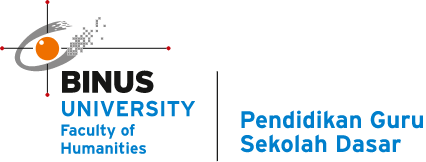The Student and Distance Education
In the evolving tapestry of educational paradigms, distance education emerges as a transformative journey, sculpting learning landscapes and catalyzing intellectual evolution. This progressive modality of learning unveils diversified learner traits, intricate factors influencing academic success, and a spectrum of responsibilities that form the crux of the learning experience.
1. Traits of the Distance Learner
1.1. Adult Learners
Benson’s (2004) categorization of adult learners into “white-collar” and “blue-collar” workers offers insight into the distinct learning trajectories and preferences of these busy adults. White-collar learners, often embroiled in structured professional domains, demonstrate a profound inclination towards analytical and organized learning paradigms. Their learning strategies are often reflective and systematic, parallel to their professional engagements.
In contrast, blue-collar workers, immersed in the realms of practical and operational professional spheres, display a tangible affinity for applied, experiential learning. The synchronization of learning with real-world applications is pivotal for this demographic. Regardless, the convergence of life and professional experiences enhances the contextual relevance and applicative dimensions of learning for adult learners, enabling the infusion of theoretical constructs with pragmatic insights.
The essence of adult learning in distance education is characterized by self-directed learning trajectories and an intricate tapestry of motivational threads. The self-regulation of learning, coupled with the intrinsic motivational undercurrents, orchestrates the learning rhythm, allowing adult learners to traverse the realms of knowledge with autonomous zeal and reflective discernment.
1.2. K-12 Learners
The myriad of developmental stages and cognitive capacities within the K-12 learner spectrum necessitates an adaptive and supportive pedagogical approach. The architectural nuances of learning frameworks for this eclectic demographic need to resonate with their developmental nuances, ensuring an environment rich in engagement and interaction. The seamless amalgamation of technological innovations with pedagogical strategies enhances the learning aura, enabling the fostering of intellectual curiosity and developmental acumen.
2. Factors Influencing Learner Success
2.1. Attitude Factors
The interplay of attitude factors within the distance education framework significantly influences the learning ambiance. A growth-oriented mindset, characterized by enthusiasm, curiosity, resilience, and adaptability, enhances the academic ambiance, transforming learning impediments into developmental catalysts. The transmutation of challenges into opportunities for learning and growth optimizes the learning process, catalyzing academic success and intellectual evolution.
2.2. Experience
The amalgamation of varied experiences, both academic and non-academic, enriches the learning environment, providing a kaleidoscope of perspectives and contextual insights. The symbiotic relation between theoretical concepts and experiential applications enhances multidimensional learning experiences, enabling the cultivation of comprehensive understanding and pragmatic application of acquired knowledge.
Experience acts as a conduit for the integration of diverse perspectives, fostering holistic learning and enriching the intellectual discourse within the learning community. The intertwined strands of theoretical acumen and experiential insights create a dynamic learning ecosystem, propelling learners through the intellectual voyage with enriched contextual understanding and diversified analytical insights.
2.3. Elements of Success
Success in distance education is a harmonious symphony of diversified elements like disciplined time management, cognitive strategies, motivational currents, and metacognitive reflections. The strategic orchestration of these elements aligns with academic objectives and intellectual pursuits, optimizing the learning experience and enabling the realization of academic excellence.
3. Learner Responsibilities
3.1. Differences in Settings
Adaptation to varied learning settings in distance education imposes a significant responsibility on learners. The dichotomy of learning spaces necessitates technological proficiency, adaptive finesse, and focused concentration. The reconciliation of academic rigor with diverse learning spaces is instrumental in mitigating distractions and optimizing learning outcomes, ensuring the sanctity of the learning process.
3.2. Time for Class
Meticulous time management is a cornerstone in the labyrinth of distance education. Structured allocation of time for academic pursuits, reflective learning, and intellectual explorations is pivotal in self-paced learning environments. The harmonious synchronization of educational engagements with other life dimensions maintains academic integrity and optimizes learning experiences, fostering a balanced and enriched academic journey.
3.3. Communication
Articulate and coherent communication is a linchpin in distance learning, ensuring clarity and constructive intellectual discourse. Proficiency in communicative modalities, both written and verbal, across diverse technological platforms enhances collaborative learning and enriches the academic discourse within the learning community.
3.4. Class Participation
The essence of class participation transcends mere attendance; it encapsulates active contributions, analytical reflections, and collaborative interactions. The infusion of intellectual curiosity and mutual respect in synchronous and asynchronous interactions cultivates a collective learning culture, fostering a symbiotic relationship between varied perspectives and analytical insights.
3.5. Assignments
The journey through assignments is a solitary confluence of intellectual exploration and disciplined execution. The adherence to academic protocols, coupled with the pursuit of excellence in articulating understandings, analyses, and syntheses of knowledge, is imperative. Assignments should echo a balanced integration of theoretical insights and innovative articulations, reflecting academic integrity and intellectual coherence.
Conclusion
The panorama of distance education is a harmonious blend of diverse learner traits, influential factors, and imperative responsibilities. The intricate dance between pedagogical strategies and technological innovations in this progressive learning model carves paths of incessant learning and relentless pursuit of knowledge. The convergence of theoretical constructs with pragmatic applications, coupled with the infusion of innovative technologies and analytical acumen, fosters an environment of holistic learning, enabling the cultivation of enlightened minds capable of traversing the uncharted territories of knowledge with intellectual resilience and creative brilliance.
Distance education is not a mere amalgamation of technology and pedagogy; it is a dynamic symphony of innovation, learning, and collaborative evolution, meticulously sculpting minds and propelling them into a future brimming with informed possibilities and revolutionary educational horizons. The continuous evaluation and reflection on every component of this learning model will further refine and optimize the effectiveness and relevance of distance education in catering to diverse learning needs, preferences, and aspirations, contributing significantly to the educational landscapes of the future.
Summary Table
| Section | Summary |
|---|---|
| 1. Traits of the Distance Learner | – This section delves into the varying traits of adult and K-12 learners in a distance learning environment. |
| 1.1. Adult Learners | – Categorized by Benson (2004) into “white-collar” and “blue-collar”, adults bring in a mix of structured, analytical learning preferences and applied, experiential learning experiences. They are motivated, self-directed, and seek contextual relevance in learning. |
| 1.2. K-12 Learners | – Require adaptive, supportive, engaging, and interactive learning frameworks. The integration of technology is pivotal for nurturing intellectual curiosity and developmental acumen in this group. |
| 2. Factors Influencing Learner Success | – Explores how attitude, experience, and various elements of success play a role in determining the learning outcomes in distance education. |
| 2.1. Attitude Factors | – A growth-oriented mindset and resilience can transform learning impediments into developmental catalysts, optimizing learning processes. |
| 2.2. Experience | – A combination of various experiences enriches learning by providing diverse perspectives and contextual insights, which are instrumental in fostering holistic learning. |
| 2.3. Elements of Success | – A harmonious blend of disciplined time management, cognitive strategies, motivation, and reflections is essential for achieving academic excellence. |
| 3. Learner Responsibilities | – Focuses on the responsibilities learners must assume, such as adapting to different settings and managing time effectively, to succeed in distance learning environments. |
| 3.1. Differences in Settings | – Adaptation to diverse learning settings is crucial. Learners must reconcile academic rigor with diverse learning spaces to optimize learning outcomes. |
| 3.2. Time for Class | – Structured allocation of time is pivotal for maintaining academic integrity and balancing educational engagements with other life dimensions. |
| 3.3. Communication | – Proficient communication is vital for maintaining clarity and fostering collaborative learning within the academic discourse. |
| 3.4. Class Participation | – Active contributions, analytical reflections, and collaborative interactions are essential for cultivating a collective learning culture. |
| 3.5. Assignments | – Completion of assignments requires adherence to academic protocols, and a pursuit of excellence in articulating understandings and knowledge. |

